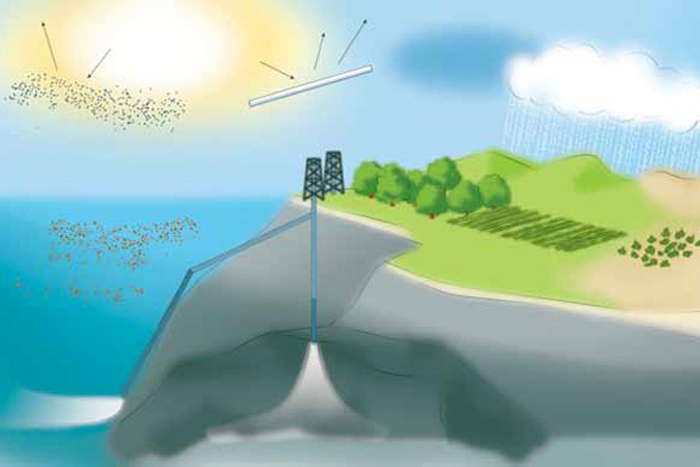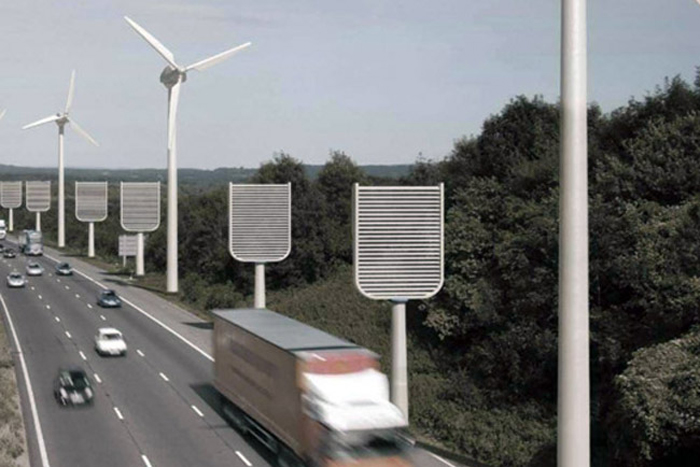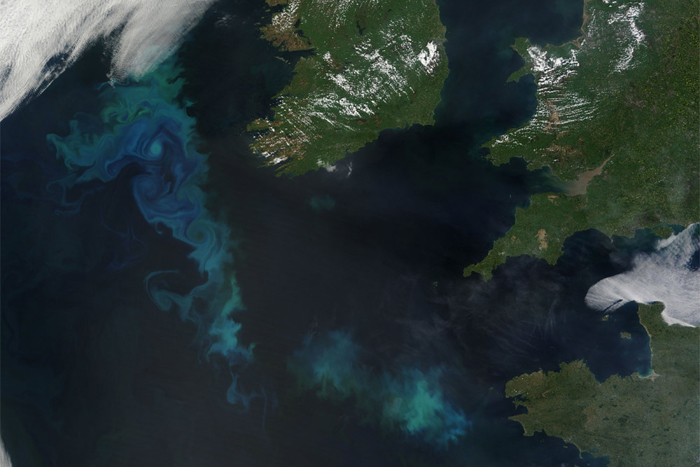Changing Earth: 7 Ideas to Geoengineer Our Planet
Geoengineering our planet

Humans may have changed the Earth's climate ever since they began using "slash and burn" tactics to clear forests for growing crops. But today's civilizations must deal with the industrial revolution's contribution to a warming planet and the choice of trying to reverse or balance out such climate change with new geoengineering tactics.
Geoengineering ideas typically aim to stop the warming of the Earth's climate by removing the greenhouse gas carbon dioxide (CO2) or by reflecting more sunlight back into space. Many mimic natural processes such as the cooling effect of volcanic eruptions or boosting the CO2-absorbing effect of forests. But the idea of humans intentionally engineering the Earth's climate on a grand scale still attracts plenty of controversy as well.
Here you can take a look at ratings for some of wildest geoengineering ideas described in a 2009 report by the UK's Royal Society. The British study has been cited in later U.S. reports by the U.S. National Academy of Sciences (2010) Washington-based Bipartisan Policy Center (2011).
Cloud seeding

White clouds based on small micro-droplets of moisture could reflect more sunlight to slow down the heating of the planet. Many proposals have suggested using ships or aircraft to seed clouds with a spray of salty ocean water, or perhaps dropping a special hydrophilic (water-attracting) powder from aircraft.
Impact: Low to Medium. There is uncertainty about producing enough of the cloud seeding effect, and the method is largely limited to areas over oceans.
Affordability: Medium. The cost of ocean water is low, but the cloud seeding must continue almost constantly for a long period of time.
Timeliness: Medium. The effect on lowering temperatures would begin within one year. Deployment could start within years or a few decades.
Get the world’s most fascinating discoveries delivered straight to your inbox.
Safety: Low. The cloud seeding may end up affecting weather patterns and ocean currents. There is also the possibility of pollution of the cloud seeding uses chemicals or materials other than sea-salt.
Air capture of CO2

Humans could capture CO2 directly from the ambient air similar technologies already capture carbon from power plants. The CO2 would be absorbed by solids or alkaline liquids before being moved to long-term deep storage underground.
Impact: High. This idea is both doable and has no limits on the size of its possible effect. It also tackles a main cause of climate change and ocean acidification by removing CO2.
Affordability: Low. The carbon capture methods would have potentially high material and energy costs.
Timeliness: Low. Humans still need to do more work to find cost-effective air capture methods, and would need time to build the infrastructure to do the job. It would also be slow to reduce global temperatures.
Safety: Very high. There are few side effects.
Aerosols in the atmosphere

Humans could release a wide range of tiny particles into the stratosphere to reflect sunlight back into space. That mimics the natural cooling effect of huge volcanic eruptions that toss similarly small particles high into the atmosphere. Fleets of aircraft, rockets, balloons or even huge artillery guns could do the job of delivery.
Impact: High. This is already doable and possibly very effective. There is also no limit to its effect on global temperatures.
Affordability: High. This only requires small quantities of materials at relatively low cost.
Timeliness: High. The effect would start to reduce temperatures within one year. Deployment would only require years or possibly a few decades.
Safety: Low. Many possible side effects include damage to the stratospheric ozone layer, effects on high-altitude clouds, and impact on the biological productivity of plants and animals.
Space sun shields

Huge sun-shields in space could reflect solar radiation away from Earth. Such shields would require tactics worthy of a science fiction story arrays of thousands of mirrors, swarms of trillions of reflecting disks, a huge reflector made on the moon out of lunar glass, or a Saturn-like ring of dust particles and shepherding satellites.
Impact: High. There is no limit on its possible effects on global temperatures.
Affordability: Very low to Low. Space launches and operations would mean a high cost for deployment and maintenance, but the methods could have a very long lifetime once deployed.
Timeliness: Very low. Humans would need several decades at the very least to put reflectors into space. The reflectors would begin to reduce global temperatures within a few years.
Safety: Medium. There would be regional climate effects, but no known biochemical effects on the environment.
Speed up weathering

Weather effects naturally eat away at silicate rocks (the most common rocks on Earth) an effect that leaves silicate free to react chemically with CO2 and store it as carbonate rock. The natural process occurs slowly over many thousands of years, but humans could speed up the weathering effect by mining silicate materials to spread them more widely. They could possibly even store the dissolved materials leftover by the chemical reactions in the oceans.
Impact: High. There is plenty of room for storage in either the Earth's soils or oceans. Both methods would address the cause of both climate change and ocean acidification, but dumping materials in the ocean could directly reverse ocean acidification.
Affordability: Low. The mining, processing and transportation of silicate materials would be expensive and possibly require a lot of energy.
Timeliness: Low. This would be slow to reduce global temperatures, would take time to build the necessary infrastructure, and would also require time to investigate its efficiency and possible side effects on the environment.
Safety: Medium or High. May have side effects on soil pH, vegetation, and marine life.
Make the desert shiny

Hot deserts receive high levels of solar radiation through sunlight. One geoengineering proposal suggests covering the deserts with reflective polyethylene-aluminum surfaces to boost their reflective power an idea similar to the lower-risk concept of making building rooftops white or shiny to reflect sunlight.
Impact: Low to Medium. This idea would require complete and very reflective coverage of all major desert areas (about 10 percent of all land).
Affordability: Very low. The cost of materials, deployment and maintenance could be huge.
Timeliness: High. Could be done very quickly and would prove rapidly effective.
Safety: Very low. There would be huge environmental and ecological impacts on desert ecosystems, as well as probable effects on weather.
Ocean fertilization

Ocean algae floating on surface waters represent natural sponges that soak up CO2 the first step toward storing CO2 in the deep sea as dead organic matter sinks to the bottom. Researchers have tried small experiments to find out if seeding the ocean with iron or other nutrients can boost algae blooms and that CO2 storage effect.
Impact: Low. Humans could try this geoengineering tactic today, but tests have suggested it wouldn't be very effective. The ocean's natural carbon cycling also makes this unlikely as a long-term carbon storage solution.
Affordability: Medium. This would not be very cost-effective, especially for methods other than iron fertilization.
Timeliness: Low or Very low. Ocean fertilization would be slow to reduce the Earth's global temperatures.
Safety: Very low. This method has big risks for "unintended and undesirable ecological side effects," such as increasing the number of ocean "dead zones" starved of oxygen or slightly increasing acidification of the deep ocean.



